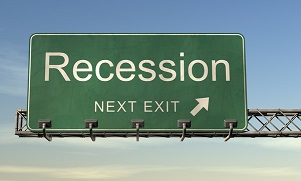Financial Post: Food and Energy Shock This Severe Has Only Happened Four Times Before - Three Led to Recession

Article by David Rosenberg in Financial Post
Food and energy inflation — notoriously volatile but representing key expenditures for households that can’t easily be reduced — has been surging. At more than 15 percent year over year (a threshold first breached last October), we are seeing a degree of price gains that have only occurred four other times in the past (1973, 1979, 2005 and 2008).
Note that three of these instances took place during economic downturns, a warning to investors that the spike in prices that has already transpired raises the odds of a recession.
The recent decline in equities, as well as the widening in high-yield spreads, provide further confirmation of this rising risk on the horizon.
Keep in mind that this is before the sanctions on Russia have exerted their impact on food and energy prices. Thus far during March, agriculture prices are up 15 percent and energy prices are 10 percent higher. This will further exacerbate food and energy costs for households, leading to less disposable income for discretionary purchases.
One can readily imagine how this will lead to an especially large pullback in demand for big-ticket durable goods, which were already poised to see a meaningful demand hit as purchases were pulled forward during the pandemic.
In light of our view that recession risks are rising, particularly given the moves in food and energy prices, we went back and looked at stock market performance in the year following a spike in food and energy CPI (above 15 percent year over year).
Perhaps unsurprisingly — since three of four occurrences took place during recessions — the S&P 500 did quite poorly in the following year, with an average decline of 11.1 percent. All 11 S&P 500 sectors declined. Conversely, technology (-20 percent) was the worst performer, which is to be expected given its long duration status (making it particularly vulnerable to spikes in inflation).
But the one asset class that investors should really focus on is gold, which was up a whopping 48.9 per cent during the periods under review. And this was with a stronger U.S. dollar (+1.9 percent) and Treasury yields moving higher — a positive sign that indicates fundamental support. By way of comparison, the broader commodity complex fell slightly (by 2.5 percent on average) over the next year due to the demand destruction caused by higher food and energy costs.
The bottom line is that recession risks are rising, particularly as food and energy prices, which were already spiking, are poised to move higher due to the Russia-Ukraine war.
In the corporate bond market, spreads are wider, with a particularly large move in lower-rated credit. Treasury yields also tend to increase, but the move that has already transpired suggests most of the inflation spike is priced in. However, gold has been, by far, the most attractive investment in these periods, suggesting investors should make this a point of emphasis within their portfolio.
To read this article in Financial Post in its entirety and view the relating Data, click here.